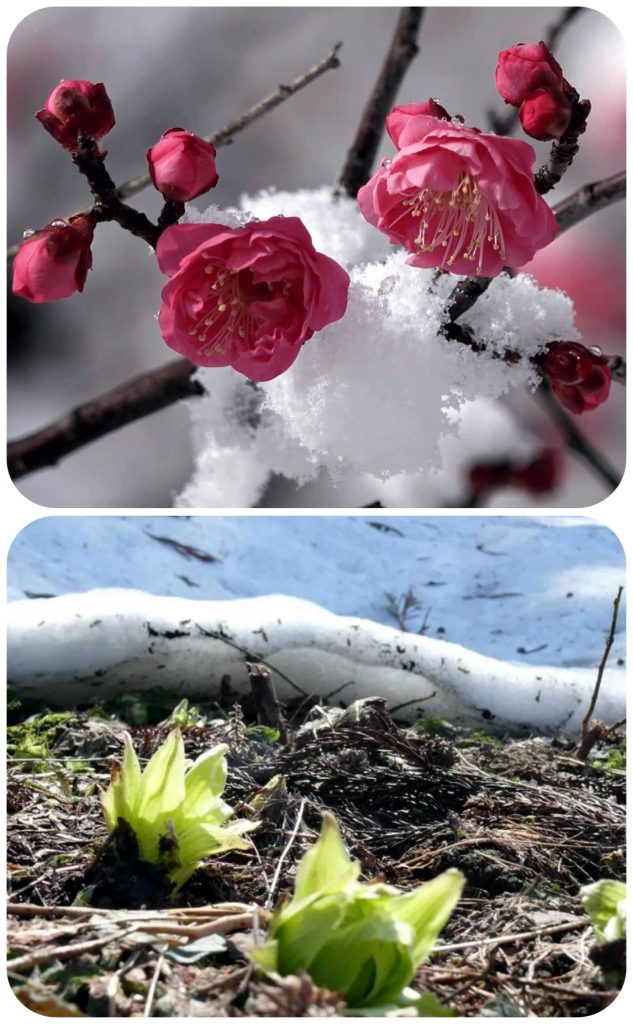
The Japanese calendar is made up of 24 solar terms, which divide the 360 days of the year into 24 parts, and 72 lords, which divide each solar term into 3 parts (初侯Shoko, 次候Jiko, 末候Makko), totaling of 72. Today marks the last solar term, ‘Daikan’ (大寒), and specifically, the last part, ‘Fukino hana saku’ (欸冬華). It’s surprising how accurate this calendar is.
In ancient Japan, there was no precise calendar, and it followed a natural calendar based on natural phenomena. It is said that the adoption of a calendar became evident around 690 AD when the Chinese lunar-solar calendar was introduced. From then until the creation of the Japanese lunar-solar calendar, Teikyōreki, by Japanese hands in 1685, it continued to use this lunar-solar calendar, which was adjusted several times. Although there were attempts to create unique calendars based on the lunar-solar calendar by the Japanese, lunar-solar calendar was primarily used until the calendar reform in 1872. After the reform, it transitioned through the Julian calendar to today’s Gregorian calendar.
While the Gregorian calendar may feel like a simple calendar, the old lunar-solar calendar mentioned earlier had a closeness to Japanese life, and I personally find it appealing.
日本の暦は、1年360日を24に分けた24節気と、1節気をさらに初侯、次候、末候の3つ、合計72に分けた72侯によって組み立てられています。今日は24節気の最後の節気「大寒」で、その初侯「欸冬華(ふきのはなさく)」の最後、と言う具合です。いつも思うのですが、意外にこの暦が当たっているんですね。
日本では、古くは確かな暦がなく、自然現象に従っていた自然暦だったと言われており、明らかに暦が採用されたのは、中国渡来の太陰太陽暦を用いた690年からのようです。それからは1685年に初めて日本人の手によってずれを修正して作られた和暦、貞亨暦まで、この太陰太陽暦を使ってきました。その後、数度、日本人が太陰太陽暦を基に独自の暦を作りますが、明治5年に改暦されるまでは、基本的には太陰太陽暦を使い続けました。改暦以降はユリウス暦を経て今日のグレゴリオ暦になります。
グレゴリオ暦が単なるカレンダーと言う感じがするのに対して、先に述べた旧暦の太陰太陽暦は、日本人の生活に密着した親近感があって、僕は好きです。
